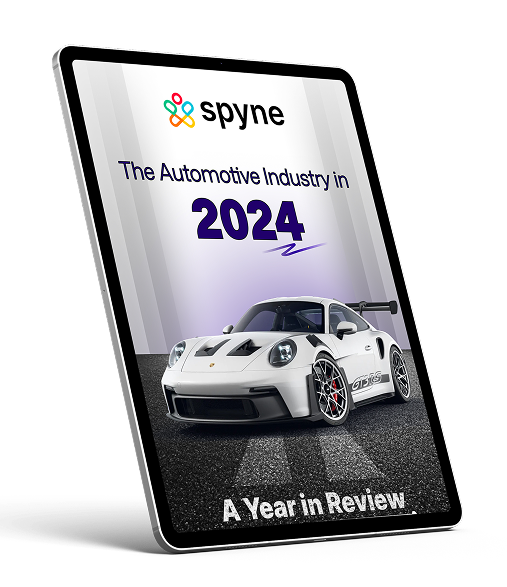Have you ever pulled up to a toll booth, coasted through a mall parking lot, or zipped past a traffic camera and wondered, “How did they catch my number plate so fast?” That smooth, almost invisible process is powered by something called Automatic Number Plate Recognition Technology (ANPR).
With roads busier than ever and cities growing smarter by the day, Automatic Number Plate Recognition Technology has become a backbone for everything from law enforcement surveillance to parking management to toll collection systems. They even play a starring role in the rise of intelligent transport systems, the kind that makes future smart cities possible.
So, in this guide, we’ll break down how vehicle number plate detection actually works, the technology behind it, and why it’s shaping the future of modern transportation.
How Vehicle Number Plate Detection Works
At first, vehicle number plate detection might sound easy, just take a picture of a license plate and read the numbers. But there’s a lot more going on behind the scenes. It starts with a plate recognition camera. These are special high-speed cameras that can take clear pictures of cars, even when they’re moving fast. The camera captures the vehicle’s number plate, and then the ANPR system (Automatic Number Plate Recognition Technology) gets to work.
Secondly, the system finds the plate in the image, reads the letters and numbers, and turns them into digital text that a computer can understand. This text can then be checked against databases for things like stolen cars, unpaid tolls, or expired insurance.
But it’s not always easy. Plates can be dirty, bent, blocked by sunlight, or seen from odd angles. To fix this, modern Automatic Number Plate Recognition Technology (ANPR systems) use smart software and machine learning. Lastly, this technology is used in traffic enforcement, parking systems, toll collection systems, and even in police cars. It helps cities run better and keeps roads safer, all without needing someone to stand there watching. So while it looks quick and simple, license plate recognition is actually a smart and powerful tool working quietly in the background.
Core Components of Automatic Number Plate Recognition Technology
To understand how reliable license plate recognition is, it’s important to know the pieces involved:
- Plate Recognition Cameras: These cameras are the eyes. Unlike regular security cameras, they are built with features like infrared illumination, fast shutter speeds, and zoom lenses to capture moving plates clearly in any lighting.
- Processing Software: This is the brain. Once an image is captured, software isolates the plate, corrects distortions, and uses Optical Character Recognition (OCR) to read it. Moreover, the better the software, the fewer mistakes.
- Lighting and Infrared: Light conditions can ruin even the best photos. Infrared lighting is required for reading plates at night without disturbing drivers.
- Databases and Networks: Lastly, once recognized, the license plate data is matched against databases, be it a police watchlist, a toll account, or a parking reservation.
However, each of these elements must work together seamlessly to deliver fast and accurate results, especially for things like real-time surveillance or fast-moving highways.
Plate Recognition Camera Systems
When we talk about plate recognition camera systems, we’re talking about specialist gear. These systems don’t just take pictures. They’re optimized for:
-
- Capturing plates at speeds of up to 150 mph
- Handling different angles and vehicle sizes (trucks, motorcycles, low cars)
- Managing tough weather (rain, snow, fog)
- Operating 24/7 without human intervention
Top-end systems are often mounted on highways, intersections, or even police vehicles. They also feature built-in ANPR software to instantly process the captured images, eliminating the need for external computers.
Spyne, for example, integrates number plate detection technology to not only read plates but also blur plates automatically in car imagery where needed, a feature especially useful for car photography, vehicle inspection, and digital marketplaces.
ALPR vs. ANPR: Is There a Difference?
If you’ve been confused between ALPR (Automatic License Plate Recognition) and ANPR, you’re not alone.
- ALPR (Automatic License Plate Recognition) is a term mostly used in the United States.
- ANPR stands for Automatic Number Plate Recognition Technology which is more common in Europe and other regions.
The tech itself is the same, which is the cameras and software working together to recognize plates automatically. You can call it ALPR or ANPR, the system is built to minimize human effort, increase speed, and boost accuracy in license plate data collection.
Number Plate Scanners: Speed Meets Accuracy
Today’s number plate scanners are all about doing more with less, less time, less manpower, fewer errors. Here’s what modern scanners bring to the table:
- High-Speed Recognition: Scan plates from vehicles traveling up to 200 km/h without lag.
- Multi-Lane Capture: One scanner can monitor several lanes at once.
- High Accuracy: Top scanners reach 95-98% success rates, even under harsh conditions.
- Multinational Capability: Reading plates from different regions or formats, crucial for cross-border traffic monitoring.
Without this speed and precision, things like toll plazas, border crossings, and urban traffic management would become messy fast.
Car Plate Readers in Real-Time Surveillance
Car plate readers play a critical role in real-time surveillance. Cities install CCTV with ANPR to create digital “nets” that can instantly flag vehicles involved in:
- Amber Alerts: Firstly, if a child goes missing and the suspect vehicle’s plate is known, ANPR systems can instantly flag that car the moment it shows up on a camera anywhere in the city.
- Unpaid tolls or tickets: Secondly, people who ignore traffic fines or toll payments don’t stay under the radar for long. ANPR systems automatically spot these vehicles and alert the relevant departments.
- Stolen vehicles: Thirdly, the second a stolen car is detected, the system sends out an alert, so police or traffic enforcement can respond right away.
- Insurance violations: Lastly, some ANPR systems are connected to insurance databases. If a vehicle is flagged for not having valid insurance, the system knows.
However, one of the biggest advantages of this technology is how it’s used by police. Many police vehicles are now equipped with mobile ANPR systems, so even when officers are driving around, the system is constantly scanning the plates of cars around them.
These mobile units can process thousands of plates per shift, and when they get a hit, say, for a stolen car or a wanted person as they alert officers immediately, so they can act fast. In modern cities, real-time surveillance combined with vehicle inspection solutions helps authorities maintain public safety without needing a huge workforce.
ANPR for Traffic Enforcement Technology
Traffic enforcement technology has gotten a serious upgrade with ANPR. Here’s how:
Automated Speed Enforcement
Firstly, speeding is one of the top causes of road accidents. Traditionally, enforcing speed limits required officers with radar guns or mobile speed traps. Now, speed cameras equipped with ANPR can detect a speeding vehicle and automatically match the offense to the car’s registration. This helps in immediate ticketing without the need for police to physically pull over the driver. Lastly, it’s fast, consistent, and works 24/7, reducing the number of speeders who go unpunished.
Red Light Enforcement
Running a red light is both dangerous and illegal. ANPR cameras positioned at intersections are designed to catch vehicles that cross the stop line after the light has turned red. These systems include a time-stamped photo or video showing the violation. The registered owner then receives a citation by mail. This method discourages risky behavior at intersections, improving overall road safety.
Bus Lane Enforcement
Bus lanes are meant to keep public transport moving smoothly, but when unauthorized vehicles enter these lanes, it causes delays. ANPR cameras monitor bus lanes to ensure only buses, taxis, or other permitted vehicles use them. If a regular car is caught in a restricted lane, the system logs the plate and automatically issues a fine. This helps maintain smoother, more reliable public transport services in busy urban areas.
Parking Enforcement
Gone are the days of meter maids and chalked tires. Modern parking management systems use ANPR to scan and log when a vehicle enters and exits a parking area. If a vehicle stays beyond the allowed time or parks without paying, the system flags it instantly. Moreover, this helps reduce overstays and illegal parking while also making it easier for authorities to manage limited parking spaces.
Lastly, thanks to ANPR, there’s no need for an officer on every corner, the parking management system works automatically, accurately, and continuously.
Role in Intelligent Transport Systems (ITS)
In the bigger picture, Intelligent Transport Systems (ITS) are shaping the future of cities. ANPR is a vital piece of this puzzle, enabling smarter, safer, more efficient transport ecosystems.
With ANPR integrated into ITS, cities can:
- Monitor real-time traffic patterns
- Analyze congestion hotspots
- Plan better public transportation
- Deploy resources faster during emergencies
Furthermore, ANPR integrates seamlessly into vehicle inspection checklists during traffic stops or border crossings, streamlining the entire inspection process.
Future of ANPR Technology
Where is Automatic Number Plate Recognition Technology heading? The future looks faster, smarter, and more predictive. Here’s what’s coming:
- AI-powered Accuracy: Using deep learning to improve recognition rates in messy or complex conditions.
- Edge Computing: Processing data at the camera itself, speeding up real-time applications.
- Privacy Enhancements: Smarter data encryption and automatic number plate blur features to protect user data.
- Integration with EVs and Smart Cities: Monitoring EVs, optimizing green traffic routes, managing congestion in real-time.
Companies like Spyne are pushing the envelope by embedding number plate recognition technology directly into solutions for car damage assessment, car 360 spin photography, virtual tours, and car reconditioning imagery, helping car dealerships, marketplaces, and insurance companies work smarter.
Conclusion
From traffic monitoring to security to making your daily commute smoother, Automatic Number Plate Recognition Technology plays a bigger role than most people realize. And as the tech evolves, expect even faster, more reliable, and safer ways for cities, businesses, and individuals to manage vehicles.
Moreover, with companies like Spyne offering cutting-edge Automatic Number Plate Recognition Technology for automotive imaging and vehicle inspections, the future of transportation is definitely looking smarter and a whole lot smoother.






